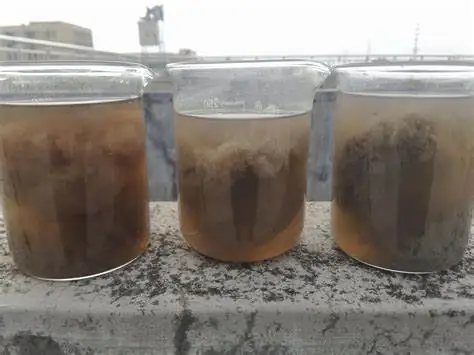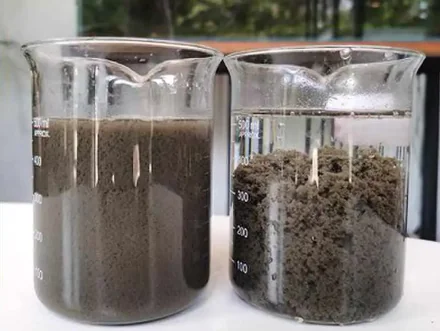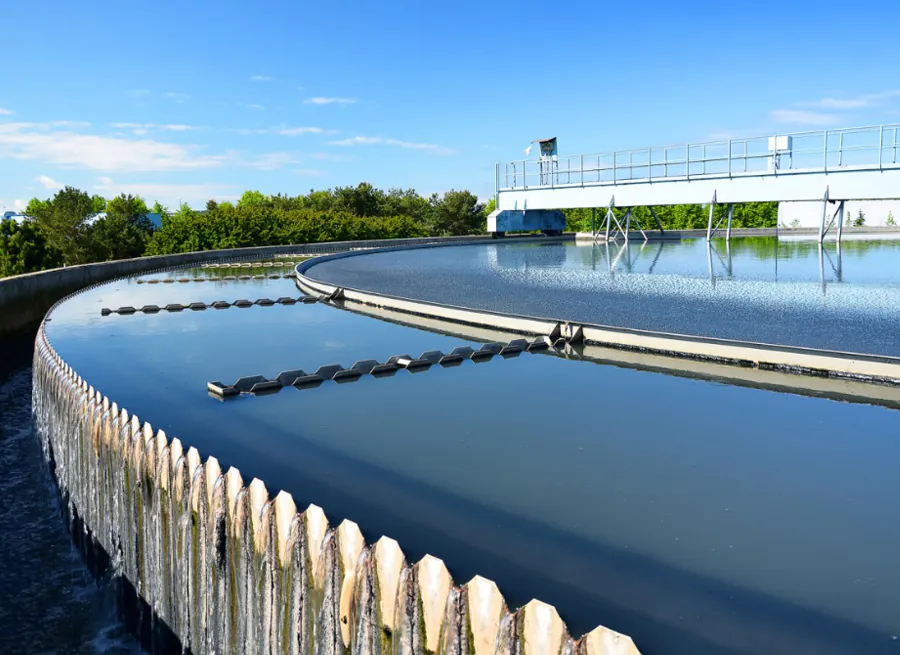Impact of Poor Sludge Settling
In wastewater treatment, the settling performance of activated sludge directly affects the stability of effluent quality. When sludge fails to settle properly, it can lead to:
- Exceeding suspended solids (SS) discharge limits, affecting compliance;
- Sludge loss or floating, reducing treatment efficiency;
- Sludge bulking, disrupting system operation.
So, what causes poor sludge settling, and how can we optimize it? This article will analyze the six most common reasons and provide effective solutions.

Six Major Causes of Poor Sludge Settling
- Filamentous Bulking
Filamentous bulking is common in high-load conditions, mainly due to:
- High organic load in influent, leading to microbial overload;
- Low sludge concentration, reducing flocculation ability and affecting sludge-water separation;
- Abnormal pH, which may promote excessive filamentous bacteria growth, causing sludge bulking.
📌 Solutions:
✔ Optimize influent organic load, control BOD/COD levels;
✔ Adjust sludge concentration, maintain MLSS within an optimal range (typically 2500-3500 mg/L);
✔ Properly dose flocculants like polyacrylamide (PAM) to enhance sludge flocculation.
- Sludge Bulking Due to Low Load
Long-term low-load operation decreases sludge activity, making bulking more likely.
📌 Solutions:
✔ Increase organic load, add carbon sources (e.g., sodium acetate) if necessary;
✔ Regular sludge discharge to prevent aging;
✔ Optimize aeration control to maintain dissolved oxygen (DO) at 2-3 mg/L.
- Insufficient Dissolved Oxygen (Low DO)
When DO drops below 1 mg/L, microbial metabolism slows down, leading to bulking or sludge floating.
📌 Solutions:
✔ Improve aeration efficiency to maintain DO levels at 2-4 mg/L;
✔ Prevent localized anoxic zones, ensuring uniform oxygen distribution;
✔ Increase return sludge flow to enhance sludge concentration.

- Over-Aeration or Aged Sludge
Over-aeration may cause:
- Microbial cell rupture, breaking down sludge flocs;
- Bubbles mixed with sludge affect sedimentation performance
📌 Solutions:
✔ Adjust aeration time to prevent over-aeration (typically 4-6 hours);
✔ Regularly check sludge retention time (SRT), maintaining it within 5-15 days to prevent aging.
- Improper Flocculant Dosing
- Excessive flocculant may lead to loose flocs and affect sedimentation;
- Insufficient addition leads to incomplete formation of sludge flocs and decreased settling properties.
📌 Solutions:
✔ Choose the appropriate flocculant, such as anionic PAM or PAC;
✔ Optimize dosage through lab testing to find the ideal amount.
- Insufficient Secondary Sedimentation Capacity or Excessive hydraulic load
- Short retention time in the secondary clarifier may not allow complete sludge settling;
- Excessive sludge load leads to sludge being carried away and resulting in sludge leakage.
📌 Solutions:
✔ Expand secondary clarifier capacity to ensure a retention time of 1.5-2.5 hours;
✔ Optimize sludge return ratio, typically maintaining it at 50%-100%.

How to Optimize Sludge Settling Performance?
📌 Summary of Solutions:
✅ Optimize influent quality to prevent excessive or insufficient organic load;
✅ Proper aeration control to avoid over-aeration or oxygen deficiency;
✅ Regular sludge discharge to prevent aging and bulking;
✅ Proper flocculant dosing to improve sludge settling;
✅ Optimize secondary clarifier operation to ensure sufficient settling time.
Through the above optimization measures, the sludge settling performance can be effectively improved, the stability of the sewage treatment system can be enhanced, and the effluent can be ensured to meet the standards!
Engagement & Follow Us!
💡 Have you encountered sludge settling issues? How did you solve them?
📢 Follow us for more professional wastewater treatment insights! 🌐 Visit our website for more water treatment products & solutions! 📩 subscribe to our newsletter for the latest industry updates and technical guides! 📲 Follow us on social media for real-time water treatment news!
🚀 Let’s optimize wastewater treatment systems and create a more efficient and eco-friendly future! 🌍
